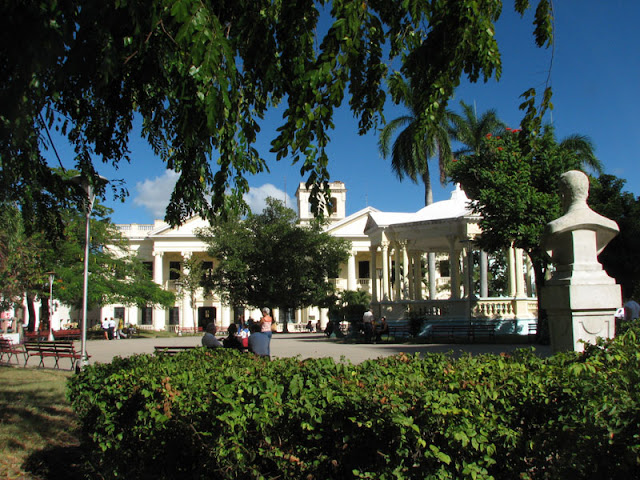MONUMENT TO ANTONIO MACEO by Dr. Alberto S. Bustamante
MONUMENT TO ANTONIO MACEO by Dr. Alberto S. Bustamante
“Bold and daring, he never again turned his weapons against the laws of the Republic and fought until death…”
Fourteen years after the Inauguration of the Republic, the monument to the “Bronze Titan” was unveiled on May 20, 1916, next to the Havana seawall, at the intersection of Belascoaín, San Lázaro, and Marina streets, not far from the Casa de Beneficencia, where the National Bank of Cuba would later be built, today occupied by a hospital. The monument is made of marble and granite, with extraordinary bronze sculptures representing “Patriotic Love, Sacrifice, Thought, Justice, Action, and the Law.” On a higher level, the redemptive epic of the war is depicted with the triumph of the Republic, the mambí, and the impressive sculpture of “Victory.” Atop the marble pedestal stands the equestrian statue of Antonio Maceo, the “Bronze Titan,” with his back to the sea, proudly facing the Emerging Republic to which he dedicated his life.
At the age of twenty-three, during the Ten Years’ War, Maceo joined the forces of General Máximo Gómez. On December 7, 1896, he died in San Pedro, Punta Brava, after carrying out the legendary and incredible invasion from the East to the West. The firm and well-drawn line of conduct of General Maceo symbolically begins with the invasion at the fields of Baraguá, the same place where, years earlier, he had voiced his protest at the signing of the document ending the Ten Years’ War without achieving Cuba’s independence in 1878.
Preparations for the inauguration of the monument began under Cuban President General José Miguel Gómez, and the unveiling took place during the presidency of Mario García Menocal. The placement of the monument was overseen by Mr. José R. Villalón, Secretary of Public Works.
The tribute in stone and bronze was the work of the talented sculptor Domenico Boni, who appears in the photograph in his Madrid studio with several of the sculptures that form part of the monument. General Maceo holds a prominent place among the Immortals of American Liberty; his military tactics are an example studied in many military academies in the United States, Europe, and Latin America.
Just as Cubans in 1896 refused to accept the death of their legendary hero, he later became a source of inspiration and struggle up to victory, due to his nobility and bravery — an example for new generations of Cubans.
The monument to Maceo, by Domenico Boni, is considered one of the foremost monuments of Republican Cuba, and for that reason, we have chosen to highlight it in the magazine HERENCIA.
The figure of the “Bronze Titan” lives on in the hearts of all Cubans, and his call to charge, “al machete,” is frequently seen written, often subversively, in parks and public spaces throughout our suffering homeland.
It is ironic that in Maceo Park, at the foot of this very monument, a popular uprising broke out in August 1995, with the same cries for independence heard a hundred years before: “Viva Cuba Libre!”



Comments
Post a Comment